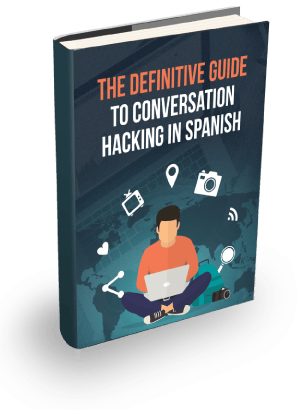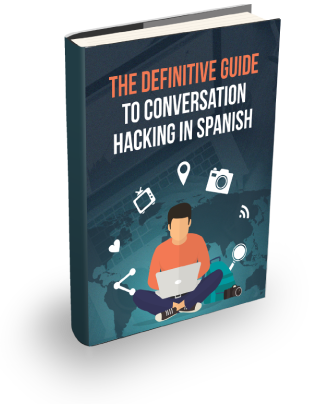
It is important when starting off that you become familiar with the most useful words.
Learning high frequency vocabulary is crucial. There is little advantage in understanding a complex array of words if you can’t convey the most simplest of ideas.
In this post I’m going to cover the 5 most useful Spanish verbs from both a frequency and practical point of view.
Even if you can’t speak a word of Spanish yet, these verbs will be of use if you are travelling to a Spanish speaking country.
In no particular order, the most useful Spanish verbs are as follows;
Poder – to be able to
This is an extremely useful verb, if you know the conjugations of this verb you can express the ability to ask for help, make requests, to express possibility and convey your ability or lack or ability to do something.
If you know minimal Spanish, you can use ¿puedes? with an appropriate gesture to ask for help, provided you only need help with something basic such as carrying a bag, changing a flat tire or ordering some food.
Of course, if you need help with something more complex, you are going to have learn some more words.
Querer – To want
When you can express desire, you can start to address your most basic of hierarchical needs. For example if you are hungry you could say querer and make a food eating gesture. If you need water you could make a drinking gesture. This most basic of interaction would easily get the point across. You may want to rest, sleep or need shelter. When you know querer you can use it to let any local know what you need at any given moment.
Tener – To have
This is useful for letting others know what you have and don’t have. If you don’t have money, a room to stay, a bus ticket or a light for a cigarette. You can express what is or isn’t in your possession. If you want to express that you don’t have something simply negate the verb with ‘no’. A good example to avoid hagglers: ‘no tengo dinero’ – simple and to the point!
Hablar – To speak
This is useful for letting someone know that you can’t speak the language. With a lack of Spanish training, you may think that it is obvious that you cant understand or convey an idea. Yet despite your lack of obvious skills you would be surprised at how often people assume that your Spanish is sufficient to understand them. And even on some level they may know that you can’t understand them. But for some reason they continue speaking to you in their native tongue at top pace.
Every now and then it can’t hurt to give someone a reminder of the fact that you absolutely do not understand them – “No hablo espanol” should solve the problem.
Necesitar – To need
There is a subtle difference between ‘Querer – to want’ and ‘Necesitar – to need’. And in most circumstances Querer will do the job. But, being able to express need is important if the situation you are in requires a higher level of urgency. You may need medical attention or you may be in a tight predicament and in need help desperately. You could ask for help with ‘Poder’, but it won’t express the same level of importance as ‘Necesitar’. If you can express a higher level of importance for your issue, you are much more likely to get a response that would be of value.
A lot of travel books will give you the basics: hello, thank you and goodbye. And don’t get me wrong, an exchange of pleasantries is valuable when building rapport. But if you are trying to get something done, you need help or want something. These top 5 verbs are going to be extremely useful to you when you travel to a Spanish speaking country.
Of course, it would be wise to continue your Spanish studies far past these five useful verbs. But if you are just starting out or lost focus then remember to come back to what is most fundamental and that is conveying the most basic of ideas.



Great tips! I have been using puedo instead of poder, but I’m wondering how it would be used when I’m asking permission for something? Would I actually way “poder como esso?” or am I already using it correctly by saying “Puedo como esso?”
Hola Tom, yes you are using it correctly.
If you are asking for permission, you should use the first person form “puedo”, for example, ¿Puedo hablar contigo? (Can I speak with you?).